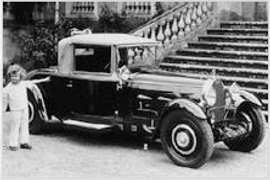BUGATTI Type 44 Models/Series Timeline, Specifications & Photos
First production year: 1927
Engines: Gasoline
Body style: Convertible (spider/spyder, cabrio/cabriolet, drop/open/soft top)
Type 44 was the most produced Bugatti from that era, with over 1100 units. It was based on the Type 38 model and it was available as a convertible or closed coupe.
Type 44 was unveiled at the 1927 Paris Motor Show. Its long hood, with the specific Bugatti radiator grille, and exposed wheels were the attraction of the exhibition. Soon after, the orders started to pile up. Its success was due to its performance. It was the supercar of that era, it was a road car for race drivers.
Some bodyworks were made by the Bugatti factory, while other Type 44s were sold as chassis plus engines to be completed by other coachbuilders. Apart from the specific engine case, the cabin was completed as a two or four-seater, most of them as convertibles. There were some coupe versions. The back of the car was either vertical, with a trunk or with a sweeping, more aerodynamically, form.
Like any other Bugatti, the use of leather and wood grain interior was not spared. The instrument panel was flat and the dials were installed on the left side of the driver. But it was the customer who decided where to put and what since the customization could go up to the finest detail.
The engine itself was one of the best road-engines from that era. The 3.0-liter inline-eight unit featured an overhead camshaft and three valves per cylinder: one for intake and two for exhaust. It was mated to a 4-speed manual gearbox. The front axle was a carry-over from the Type 38 and the live rear axle was supported by leaf-springs. The drum-brakes all around were a common technical solution for that time.
